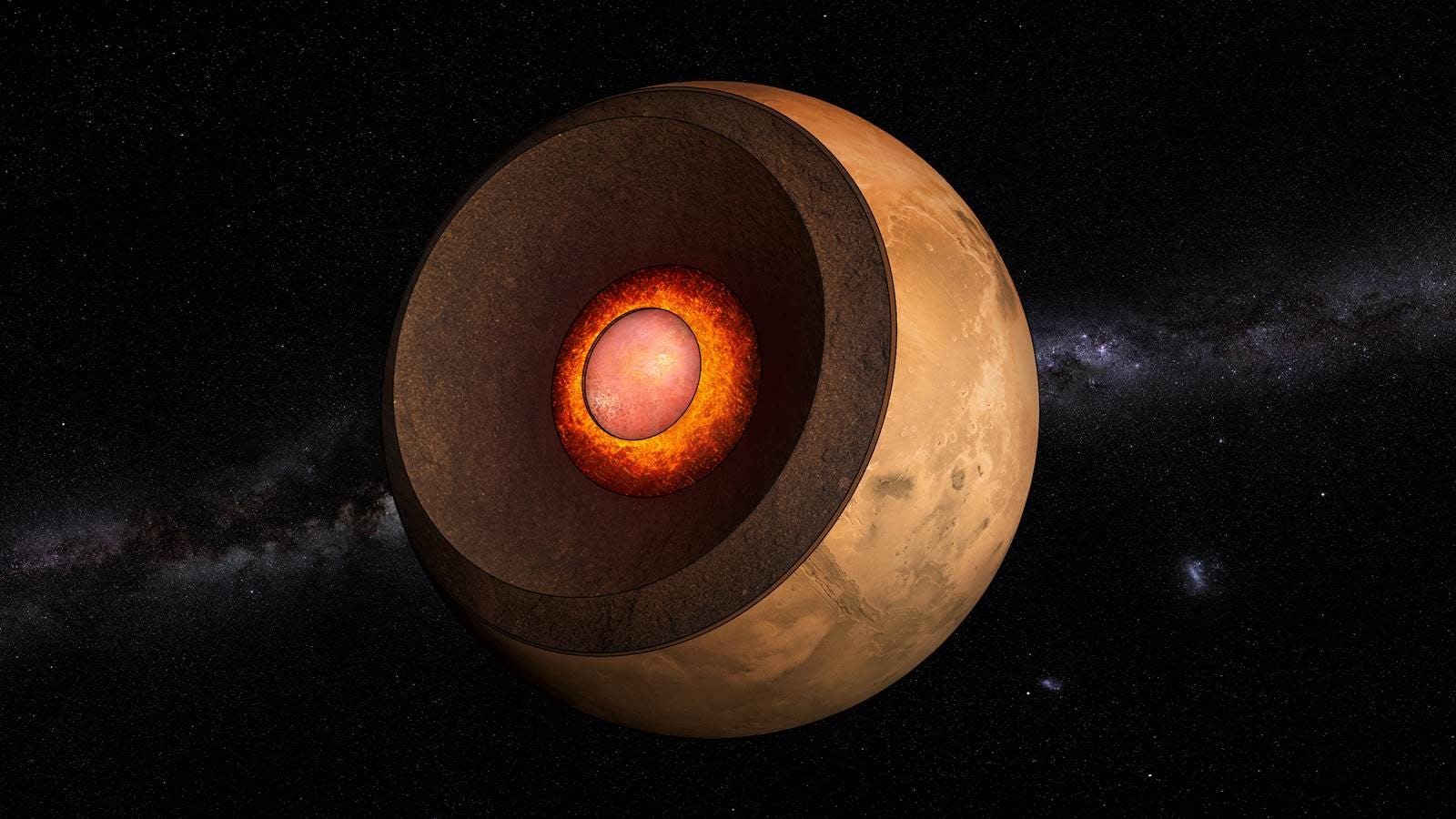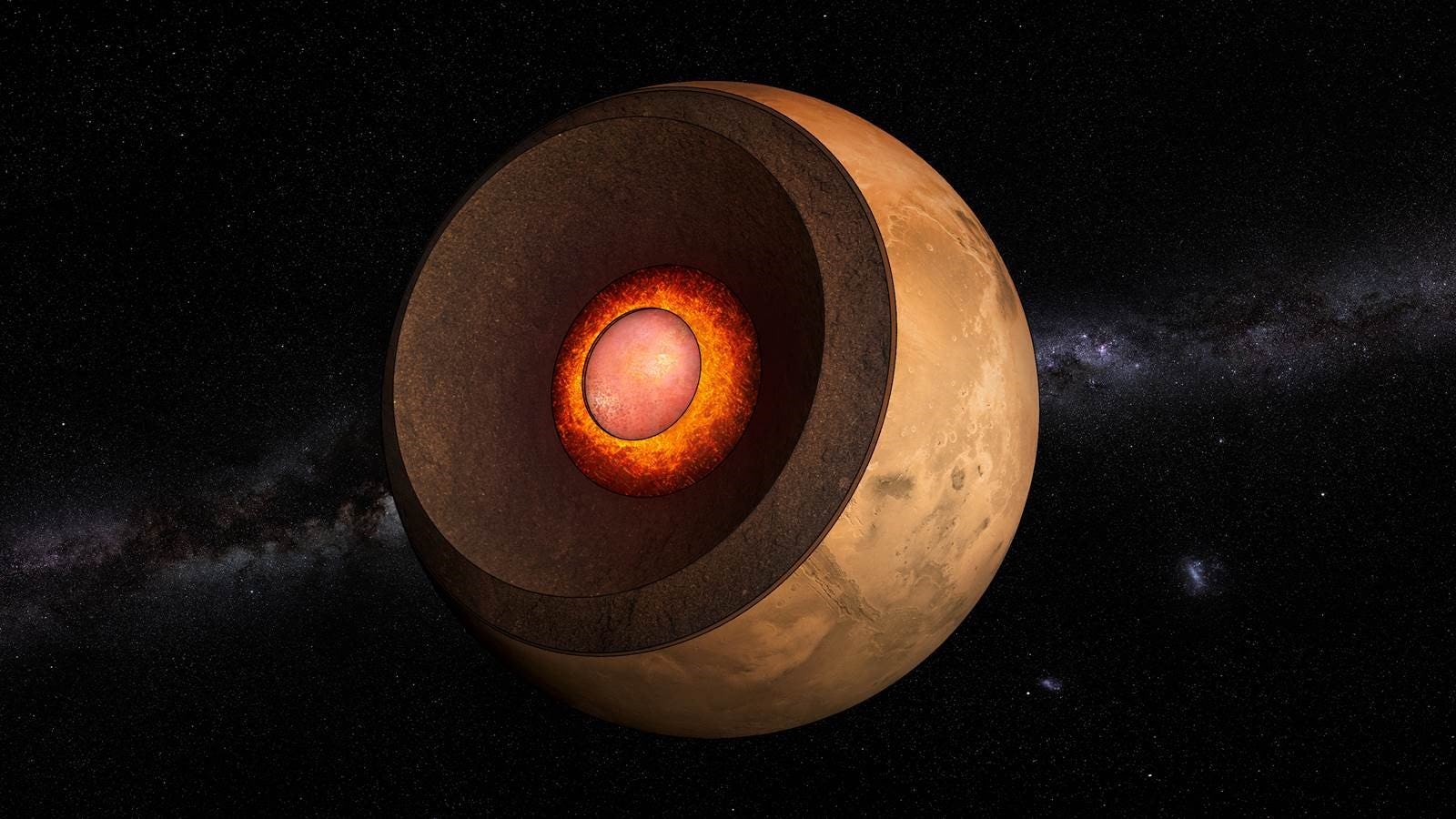
Scientists just took a better slice of Mars.
Planet formation is a little like making a cake. If you haven't yet added an emulsifier, you will find that the liquids and fats separate in the bowl. Something like this happened when big celestial bodies in our Solar System were forming billions of years ago. Scientists now think Mars was once covered in a global magma ocean, and eventually, gravity began to separate the different stuff within this gooey ultra-hot blob into layers.
Data from NASA’s Mars InSight mission suggests that its center is more decadent than expected. Rather than one single, sizable liquid iron core, there’s evidence that it's much smaller but topped with a coating of molten rock.
Listening to a crash
On Wednesday, the journal Nature published two papers based on data from Insight, which listened keenly to Mars’ interior rumblings beginning in 2018 until dust blanketed the stationary lander’s solar panels, cutting off its energy supply and forcing the mission to end in 2022.
The Red Planet is only the third celestial body, after Earth and the Moon, to have its interior significantly examined via seismological waves, the same science that tracks earthquakes on Earth. On Mars, tremors are called marsquakes. These perturbations come from internal activity or when a meteorite smacks into the planet’s surface, and they give scientists an idea about what is sitting in the middle of the planet, deep below any probe could survive. Waves travel differently depending on what they move through, and thanks to one particular meteorite strike, scientists have reimagined what lies deep beneath Mars’ surface.
The two new studies focused on a strike from a meteor that smacked into Mars almost on the opposite side to where Insight was located. The September 2021 event created waves that sliced through the planet and skimmed across the top of Mars's center. This reading, paired with other marsquake data, reveals that the iron core of Mars is smaller than previously estimated, owing to the coating of a molten rock layer.

Slinky science
A critical aspect of the new work is the P wave that propagated through Mars. In seismology, there are two main types of waves. Imagine a slinky on a table, and you're holding one end. Push it, and the coil will compress and travel, known as a P wave. The meteorite impact was almost on the other side of Mars to where the InSight probe was stationed, so the lander picked up this P wave after it hit the molten rock layer on top of the iron liquid core.
Other marsquakes that happened much closer to Insight produced S waves. If instead of pushing a slinky, you move the end side to side, you create a vertical wiggle known as an S wave. Altogether, P wave and S wave data show that Mars's iron liquid iron core is actually much smaller than previously predicted, as it’s surrounded by a 93-mile-thick liquid layer made of silicate.
A unique possibility
Molten rock touching molten iron “appears to be unique,” Amir Khan, a geophysicist at Eidgenössische Technische Hochschule Zurich and lead author of one of the two studies, says in a Nature article describing the research. “You have this peculiarity of liquid–liquid layering, which is something that doesn’t exist on the Earth.”
The second study suggests there was an ancient, global magma ocean on Mars, a time in the planet’s ancient past when heavy iron gravitationally separated from the lighter silicates and formed the liquid iron core that has fascinated scientists since InSight’s surveys began.
Scientists think Mars’ core is entirely covered by the molten rock, but the estimate is based on the serendipitous blows that meteorites dealt to Mars while InSight was online. There’s no future seismological survey planned for Mars to add further checks, but at the very least, what scientists have learned with the lander will inform missions to other worlds in our Solar System.







